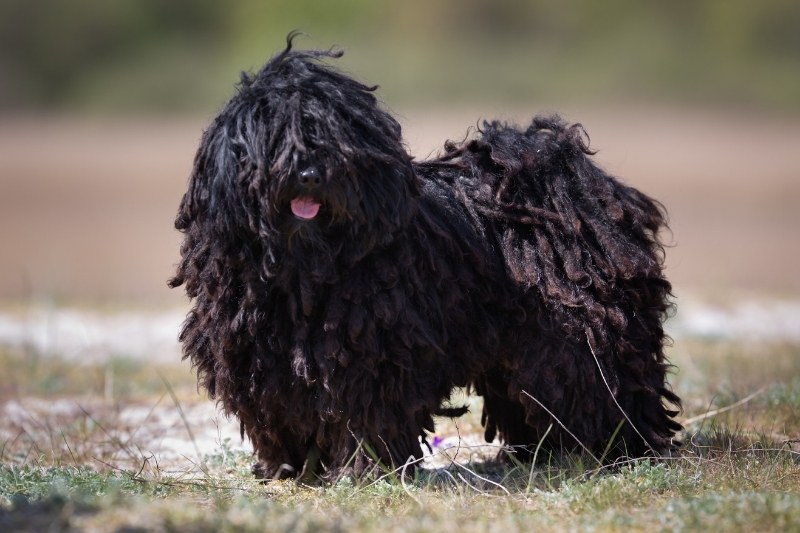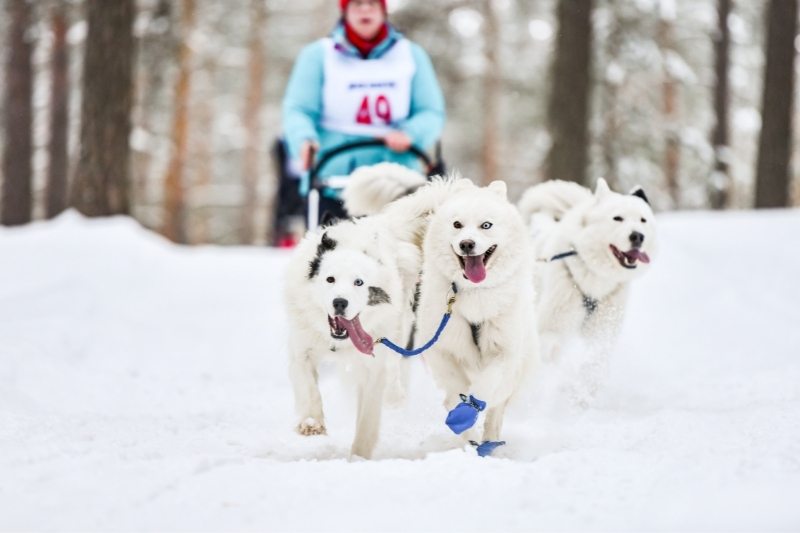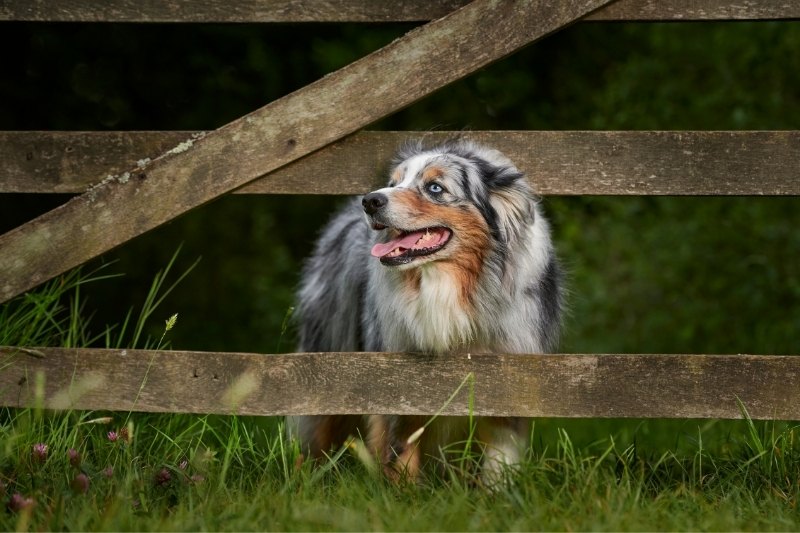All the 25 Pomeranian colors explained
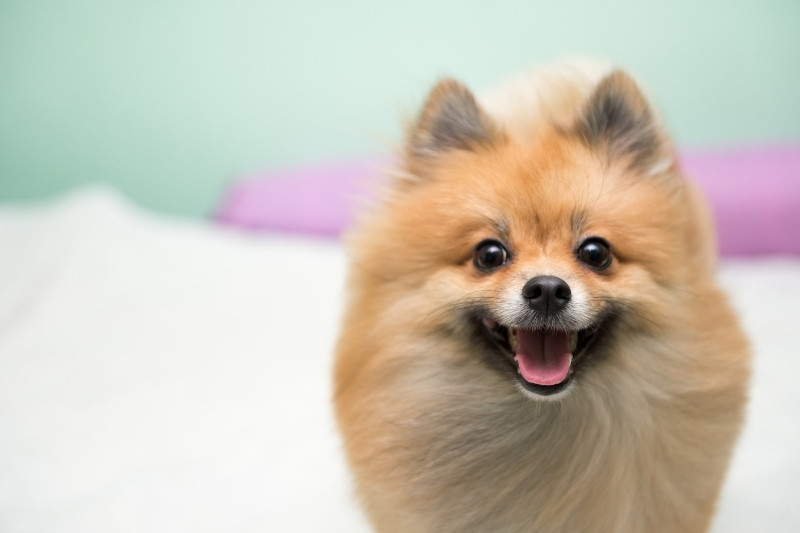
The Pomeranian is a family favorite, and it's not hard to see why. These affectionate, strong-willed, and happy pups are great companions and lifelong friends. They're cuddly, love to spend time with their humans, and are always ready for a good time!
Because of their popularity, various Pomeranian colors have sprung up. It can be challenging to navigate every coat color option and what to seek out if you're looking for something specific.
In this guide, we'll break down 25 of the main Pomeranian colors out there and discuss the different markings you might find, how many colors exist, what the most common and rare Pomeranian colors are, and more.
Below are 25 of the main Pomeranian colors. It is possible for a Pom to have a coat color outside of this list, but it encompasses nearly all of the commonly-found variations of coat color found on these furry friends.
Black Pomeranians

These sleek and stunning pooches have a solid black coat without any markings or additional colors.
As one of the oldest Pom colors, black is commonly seen both on its own and in combination with other coat color variations.
Black Pomeranians are easy to spot thanks to their striking coat, dark paws, and ebony facial features. They're as beautiful as they are adorable, and their thick, fluffy coat lends itself well to the contrast of a dark hue.
Black and Tan Pomeranians

To create a black and tan Pomeranian puppy, breeders must work with both a black Pom and tan Pom parent to ensure genes for both are present.
The result is a stunning coat defined by a tan chest, neck, and sometimes even paws.
In addition, a black and tan Pomeranian has a black coat color and light brown or tan markings on the face and body. Typically, the undercoat is a lighter color while the bulk of the dog’s coat takes on a black hue.
Cream Pomeranians

Cream Pomeranians take on a pale, orange-brown color but should have no white markings on them. They are a solid color with black eye rims, paw pads, and a cute button nose that makes them impossible to resist.
Blue Merle Pomeranians
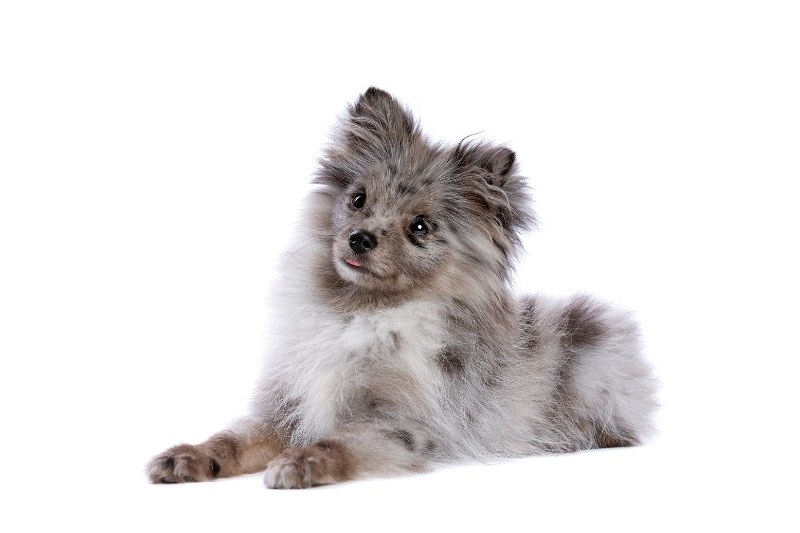
These Poms boast a unique combination of a blue coat and merle markings, resembling paintbrush drops. The results involve a speckled look both beautiful and highly desirable.
To achieve the look, breeders take advantage of a recessive gene that causes fur dilution (the loss of color over time) to create a lighter version of the coat colors that the dogs can naturally produce.
Blue Poms and their variants, for instance, actually have the genetic makeup to grow a black coat, but the presence of the recessive gene causes their fur to lighten as they age and reach the desired shade.
White Pomeranians
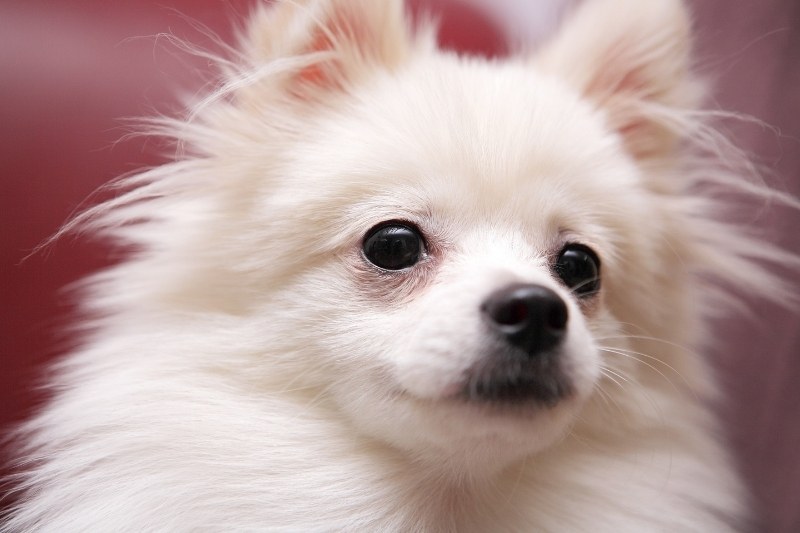
These pups have a beautiful white coat that is pure as snow, which complements their fluffy nature quite nicely! To be a true white Pom, these pups should have no other coloring or markings in their coat.
Blue Pomeranians
Blue Pomeranians are often described as gray, but the coat color is actually a lighter, more diluted version of the solid dark coat seen on black Poms. Blue Pom puppies are often born with a silvery-gray shade and mature into their blue coat over time.
The pups have a slate blue undercoat and silver or dark gray hairs. As such, they can be tricky to distinguish from other coat colors, but their adorable blue noses make them stand out.
Chocolate Pomeranians
As the name suggests, these pups take on a rich, chocolate brown coat without the presence of other colors or markings. The shade of their brown coat (light to deep) can vary, but it should always be chocolatey in its nature — anything lighter falls into the beaver Pom category.
Brindle Pomeranians
These Pomeranians have a warm-colored coat with striking black stripes. This gives them the look of small, fluffy tigers, something that breeders and pet owners alike seek out frequently!
Moreover, the black stripes may appear broken in adult Pomeranians since their coats become longer than when they were cute puppies. Also, the stripes can be broad or thin, extending to the entirety of the body's width or part of the width.
Wolf Sable Pomeranians
A wolf sable Pomeranian has a gray coat and black-tipped, dark gray guard hairs that give it, as the name suggests, a wolf-like appearance.
Cream Sable Pomeranians
Featuring a cream coat and black-tipped guard hairs, these Pomeranians resemble many of the other sable coat colors out there but are distinct due to their lighter base coat and dark nose, whiskers, eyelids, and paws.
Beaver Pomeranians
Unlike chocolate Pomeranians, which have a rich and usually deep-colored brown coat, beaver Poms have a light, biscuit-like coloring. They may be slightly darker than this, too, but they are unique because of their diluted coat.
Tri-Colored Pomeranians
This coat color features three colors: white, tan, and a third option that can vary from dog to dog. Tri-color Poms are parti Poms (solid white coat with patches of one color) with the addition of tan markings.
Lavender Pomeranians
These Poms are very hard to come by thanks to their unique and nuanced coat, which combines blue, beaver, and pink hues to form a grayish-purple end result.
Blue and Tan Pomeranians
Much like black and tan pups, blue and tan Pomeranians have a blue base coat complete with tan markings on the neck, chest, and paws. The color of their blue coat can vary, but these Poms' tan markings should be consistent.
Chocolate and Tan Pomeranians
Much like the other colored and tan Poms, chocolate and tan Pomeranian possess a chocolate base coat and tan markings on their chest, stomach, and neck.
Pomeranians with a combination of dark and light brown coloring are considered chocolate and tan regardless of how deep each individual shade is. Unlike tri-colored dogs, the chocolate and tan Pomeranian does not have any white markings.
Blue Brindle Pomeranians
A blue brindle Pomeranian is very similar to other brindle Pomeranian colors; instead of orange or black stripes, though, the dogs have blue, silvery markings. The stripes contrast beautifully with the warm-colored base coat of the Pomeranian (like orange or red).
Black and Brindle Pomeranians
Though it may seem like these furry friends are black with colorful markings, the opposite is actually true — black and brindle Pomeranians have an orangey-red base coat color with black stripes, which creates the tiger-like look so commonly associated with this coat color.
The thickness of these stripes can vary, and you may need to look closely to see their pattern due to the nature of a Pom’s coat.
Additionally, some black and brindle Pomeranians may have a black face mask, with dark hair on the muzzle creating the illusion of a mask. Also, their eyes are typically colored dark brown with black tips.
Orange Pomeranians
An incredibly popular variation of the breed, orange-colored Pomeranians have a vibrant coat that can range in shade from light orange to a deep, almost red hue.
Some orange Poms are born with sable markings and grow into their true coat color while others are born without any hint of black hairs.
Orange Sable Pomeranians
These Poms have a deep orange coat with sable markings, which makes their coat look as though it has dark bands running throughout the body.
Red Pomeranians
A step above orange Poms in terms of vibrancy are red Pomeranians, which have deep and rich orange-red coats that are similar to the color of rust. They are much darker than their orange counterparts, which makes them slightly more difficult to find.
Red Sable Pomeranians
A red sable Pomeranian has a rich red coat with black-tipped sable markings, creating a unique look blending their rusty main coat with dark and eye-catching accents.
Chocolate Sable Pomeranians
These pups make brown-tipped guard hairs and a brown coat look stunning; their coat has a complex and layered brown look that's truly one-of-a-kind.
Blue Sable Pomeranians
These Poms have a blue base coat and black-tipped guard hairs that create their sable marking pattern.
Chocolate Merle Pomeranians
Like blue merle Pomeranians, chocolate merle Poms have a chocolate coat with merle or speckled markings. Their colors are caused by a recessive gene that makes part of their coat lighten over time.
Beaver Sable Pomeranians
A beaver sable Pomeranian has a beaver-colored coat with black bands across its coat. Once again, what sets this type of coat apart from other sable variations is the hue of the base coat beneath the markings.
Types of Pomeranian Markings
The main thing that differentiates different Pomeranian colors and coat variations are often the markings on their fur.
Markings are variations in a dog's coat color that exist on part of their body; they may differ in shape, size, and color depending on the dog or the style of marking. They typically are the result of selective breeding, but sometimes they may occur when two parents Poms of different colors come together.
These markings can vary in color and intensity, but the main types on a Pom are as follows:
- White Markings
- Merle Markings
- Tan Markings
- Tri-Color Markings
- Brindle Markings
- Sable Markings
- Irish Marked Pomeranians: (similar to a Parti Pom, but with multiple colors or shades within their marked areas)
- Parti-Color Markings (a white base coat with colored patches throughout, which can vary in color or hue from dog to dog)
- Mask Markings (which create a “mask” appearance on a dog's face with their coloring)
Frequently Asked Questions
Below are some commonly asked questions about Pomeranian colors. Be sure to read on to learn even more about these wonderful furry companions!
How many Pomeranian colors are there?
As of 2022, there are 18 American Kennel Club-recognized standard colors and 9 AKC-recognized standard marking types. But, there are over 20-30 different individual color options. Even if it's not officially recognized, it's possible to find a Pom coat color of just about any sort.
What is the most popular color Pomeranian?
The most popular and common Pomeranian color is orange or orange sable. Orange Pomeranians are easy to come by thanks to their stunning coats; they're also not as challenging to breed as other coat colors, making them more readily available for adoption.
The orange Pomeranian is so common and popular that it's likely what most of us picture when we think of the breed itself.
What is the rarest Pomeranian color?
The rarest Pomeranian color is the lavender Pomeranian due to the sheer amount of selective breeding necessary to create this coat color. In addition, the colors that make it up are the result of recessive traits, so parents of a lavender Pom may be hard to find.
Also rare is the tri-color Pomeranian, which can be elusive for the same reasons.

Siobhan Brier is an animal and dog lover who will rudely interrupt conversations to point out cute dogs in public when necessary. She works as a content writer and co-owner of a small content writing agency in English, Spanish, and Portuguese called Inkless. As an online worker she travels internationally, and she is currently based in Mexico. She loves reading and writing, and she recently finished a novel based on her time living on the remote Galapagos Islands, a place known for its plentiful, endemic wildlife population!

